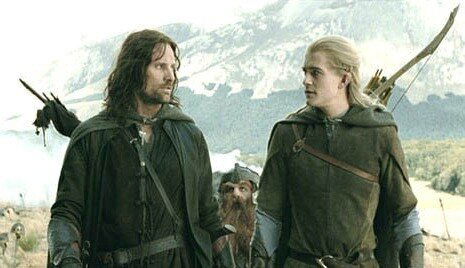Why Sidekicks Often Make Terrible Main Protagonists
Many great books and films have memorable sidekicks. From Chewbacca in Star Wars, Barney Fife in The Andy Griffith Show, or Dr. Watson in Sherlock Holmes, one thing is consistent; they are all, for the most part, as well received and loved as the main character themself. Most of the time, however, they flop when they take the lead role. Many times, authors or film directors make the big mistake of taking a really amazing character and forcing him or her into the center stage. As a result, the way that the now protagonist will undoubtedly look and feel different than the original sidekick character that everyone already knows.

After the wildly successful Lord of the Rings trilogy, director Peter Jackson attempted to once again make history with The Hobbit films. Although they performed well at the box office, many fans felt that the movies fell far from what they could have been. There are several reasons for this including, but not limited to, drifting too far away from the books, overuse of CGI, constantly trying unnecessary bridge plots in order to stretch things out so they could make three films and unbelievable action scenes. While all of these things undoubtedly contributed to the less than stellar performance of the trilogy, one thing in particular that I hated the most about the films is the character of Legolas portrayed by Orlando Bloom. The ironic part of this is that in The Lord of the Rings, Legolas was one of my favorite characters. For those that have not seen the films, I will briefly explain. The Lord of the Rings and The Hobbit are both medieval fantasy fiction stories set in JRR Tolkien's Middle Earth. The Hobbit, a roughly three-hundred-page book is far shorter, simpler, and less complex than its sequel The Lord of the Rings trilogy which is well over one thousand pages with far more side plots and characters. In both The Lord of the Rings films and books, the character of Legolas is an elf warrior who fights alongside whom many consider the hero of the story Aragorn. I cannot think of a much better sidekick than Legolas. He just fit the part, particularly in the movies. In all three films, he was always pulling off some of the most memorable moments in critical scenes, yet never was in the limelight. He was always taking backstage to other characters, especially Aragorn. It never seemed like he had a ton of dialogue or any standout moments by himself, but that is what I liked about him. His even-keeled drama-free sort of attitude set him apart as memorable.

Fast forward ten years later to The Hobbit, a prequel to The Lord of the Rings, and we see a far different character. Instead of the familiar Legolas, a far different character emerges. In The Hobbit films, Legolas takes on a lead role, with his own highly controversial female sidekick/love interest, Tauriel. One problem many fans had with this is that, aside from the obvious fact that the actor looked much older, is that he was never mentioned in the book. In fact, Tauriel was a completely non-canonical character created for the film and not by J.R.R. Tolkien himself. Although this was a legitimate complaint, it is not the main reason I disliked Legolas in the film. Legolas was far better when he was in the background. In contrast to his performance in The Lord of the Rings, The Hobbit version of Legolas comes across as overdramatic, annoying, and even a little cocky. He certainly has a deeper backstory and emotions that show, but that is not necessarily a good thing for the character. To add to the over drama he, and another more minor character, compete for the affections of Tauriel in an awkward annoying sort of love triangle. As a result, Legolas acts somewhat childish, and complex, compared to his solid. The moviemakers were trying so hard to add to his story they ruined it, resulting in leaving a lasting stigma on the character. If Legolas had acted like his original character from The Lord of the Rings, I think most people would have been far more accepting and even excited that he was in the film, even though he was not in the book. In many works of fiction, it is not rare to see this pattern time and time again.
More than ever films and books come out with unplanned prequels and sequels often expanding on past characters. Sometimes this happens years after a series is officially ended. I think the main reason we see so much of this is because of people's love of nostalgia. Readers and moviegoers grow to love certain characters and want them back. With this mentality the return of beloved characters is unavertable. But it is a big challenge to bring the character back in an original way without ruining him or her. This is perhaps the most difficult part of any offshoot project. I am not saying that it is a bad idea to bring back characters, but if you are going to, here are a few things writers should keep in mind. First, and most importantly, never bring a minor character, or any character in fact, back for money. It might be a strong temptation, but this is a terrible and lazy mistake. If you are a good writer then you can create another good original book and do not have to resort to this shallow gimmick. Make sure that you always stay true to the original personality and traits of the character. If you can't, then perhaps it is time to make a whole new story, with a fresh cast. A backstory or follow-up can sometimes be great, but if it is not going to add to what is already there in the original, then it risks ruining its predecessor and should not happen at all costs.